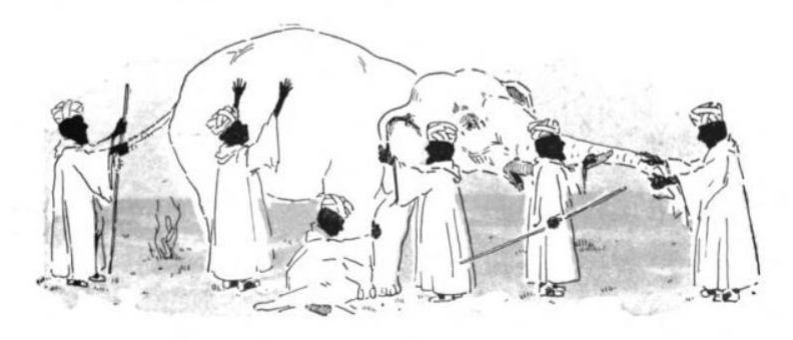Perspectives
are manifold on what should be done to reform and improve higher education in
the United States. And those attitudes
depend on one's view of this important component of America’s education
system. Some argue that American higher
education is fundamentally sound and others that it is unsustainable because of
increasing costs. Viewpoints are so varied that it seems that individuals are
talking about different subjects, much like the story of the blind men who
touch the elephant immortalized in John Godfrey
Saxe's (1816-1887) version of the famous Indian legend:
It was six men of Indostan
To learning much inclined,
Who went to see the Elephant
(Though all of them were blind),
That each by observation
Might satisfy his mind.
To learning much inclined,
Who went to see the Elephant
(Though all of them were blind),
That each by observation
Might satisfy his mind.
The story is based on
old legends from the Indian subcontinent that demonstrate that each person
brings his/her own prejudices and perspectives (blind spots) in examining an
issue, as the blind men do, with vastly different conclusions. One blind man, examining the ears, thinks the
elephant is a fan, the blind man touching the leg thinks he has found a tree trunk
and so on.
 |
| Six blind men examine an elephant. Source: Wikipedia |
According to a numerous
polls, the US public thinks that obtaining a post-secondary degree is essential
to one’s future. For example the 2013
report by Sallie Mae, How America Pays for College, cites “Unwavering belief in the value of college” with “85% of parents strongly agreed that college
was an investment in their child’s future, the highest in the last five years.”
However, the cost of
college is a concern for many. The 2012 report of the Pew Charitable Trust says, “75% of public says college too expensive for most Americans to
afford.”
And even more troubling
according to Pew, “57% of Americans say colleges fail to provide students with
good value for money spent.”
A college degree that has
proven to be, for most, the key to economic security, is becoming a birth right
for the rich but out of reach for many in the middle and poorer classes. This
fact has been documented by the HamiltonProject that reports, “College graduation rates have increased sharply for
wealthy students but stagnated for low-income students.” Moreover, the Hamilton Project also informs
us that, not surprisingly, “the most-competitive colleges are attended almost
entirely by students from higher-socioeconomic status households.”
So
how is the elephant doing? Clearly, US
higher education with its world-class institutions is serving the wealthy very
well but not the rest of America who sees higher education degree as essential,
expensive and difficult to attain.


No comments:
Post a Comment